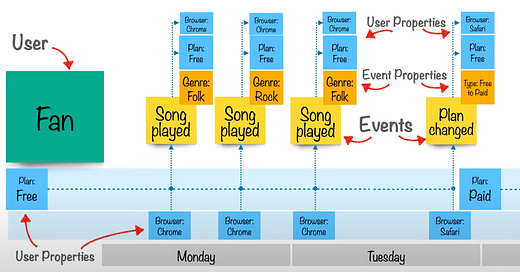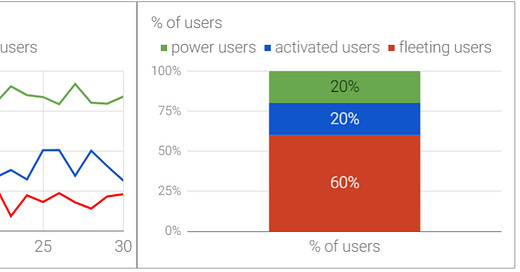

Discover more from Data Analysis Journal
Expert Insight: Ziv Wangenheim - How Data Analysts Can Evolve and Adapt - Issue 40
An insightful look into some of the biggest challenges for data analysts, and how to overcome them while building a data-driven culture
Building a data-driven culture is not easy. Creating an environment where analysts can flourish and develop depends on so many factors - leadership, budget, data strategy, data maturity, and data availability. Investing into data culture magnifies analysis impact. We know it, we talk about it, but how do we make it happen?
There is no better expert to ask than Ziv Wangenheim, co-founder and CEO at Rupert whose mission is to improve and automate data process and discovery so that analysts can focus on real data analysis - getting insights and building partnerships with their stakeholders and teams. I had a chance to interview Ziv, and I’m very excited to share some excellent ways to help analysts not only thrive but actually enjoy and love their work.
1. What are the biggest challenges data analysts are dealing with?
Companies are becoming increasingly data-driven, which is increasing the amount and type of tasks analysts need to deal with. The increasing volume and velocity of analytics requests, in addition to data proliferation, is outpacing analysts. On top of that, each request has a different context, a different set of stakeholders, and a different set of tools. To keep up with demand and the constant context switching that follows, analysts find themselves facing the trade-off of analysis quality vs. delivery speed.
In order to tackle this, we need to be collaborative and take advantage of existing work (analyses, reports, etc.) that analyst colleagues created. To do that, we’d need to maintain a centralized well-documented repository that allows for easy discoverability and understanding of old work so that it can be confidently re-used for a task. The challenge is, then, how do you maintain organization and clear documentation (two tedious and time-consuming tasks) when your workload and tight deadlines force you to move on to the next request as quickly as possible?
2. Why do you think leadership should invest more in supporting the workflow for data analysts? (If they should).
Three reasons. Improve analysts’ happiness, boost output of data operation, and reduce costs of running it. And these are all intertwined.
Although analysts make up only a small % of the overall team, their workflows extend well beyond and affect every unit in the business. They are the heart of the operation. It’s no secret that the data analyst occupation has one of the highest turnover rates (>20%). Turnover can be due to many reasons (salary, growth opportunities, etc.), but in the case of data analysts, it’s mainly because they’re unhappy — too much of their day is filled doing mundane and redundant work. This is far from what data analysts signed up for, which is to partner with their business stakeholders to assist with strategic initiatives by utilizing and extracting insights from data. If leadership were to invest in analyst workflows, the three following outcomes would occur:
Analysts would be happier, efficiently increase their output due to minimized redundancies in their work, and receive credit where credit’s due.
Business stakeholders would be empowered to make data-driven decisions, faster.
Leadership would have full visibility and control over their data operation and retain happy analysts (one of their most valuable assets), which would result in decreased costs of running the operation (including decreased analysts turnover-associated costs, such as hiring and training)
Most other organization functions have work tools (e.g., IDEs for developers), but also have work management tools (e.g. Jira) and resource management tools (e.g. gits) that properly orchestrate and help manage their workflows. Data analysts also need such support. Analysts drown in work tools that help them do what they are trained in -- predictive modeling, advanced analytics, data visualization, etc. However, they don’t have what is needed to juggle all their work while also keeping their business stakeholders happy with the fast delivery of consistent, accurate, and easily understood data. While it makes how far analyst teams have come all the more impressive, it’s also time they get this support, given their importance and impact within the organization.
3. Do you notice any trends on how the analytics industry is changing over time? What should data analysts do to adapt to these and succeed?
The analytics industry is going through a maturation phase where teams and businesses are rethinking how they can do analytics more effectively and efficiently. The field of analytics became one of the most popular career paths over the past 5-10 years with the rise of big data. Over the last decade, companies hired armies of data analysts for the main objective of wrangling and diving into massive amounts of data to find strategic insights. While the need is still there, there is somewhat of a correction happening. Leaderships are reevaluating how they can streamline and lower the cost of the data operation as well as increase output and utilization of existing data.
Analysts now must figure out how to stay organized and efficient with an ever-increasing catalog of data, incoming requests, and higher expectations around the speed and quality of results they need to provide. Analyst teams need to think about how they scale their operation and increase the value they provide to their stakeholders. For that, they must re-use previous work and make it easily accessible as well as understandable. The most successful teams will work towards the collaborative mindset: when a data analyst builds a new data asset (e.g. SQL query or dashboard), they need to think beyond the current task's scope and build with future re-use in mind. We recently wrote a blog post that provides some tips on how to do so.
4. What are the top 3-5 skills you think data analysts must-have?
Technical: SQL, BI Tools, data visualization
Business Acumen: understanding of general business knowledge (terms and frameworks), industry-specific knowledge, and company-specific knowledge
Project Management: problem definition, cross-functional coordination and communication, organization, documentation
Operational Efficiency: process and work streamlining, resource utilization and management (team and existing work), productivity
The first two points (above) are most common, but the best analysts must go beyond strong technical and business skills. There is just too much data to afford teams that can't scale analytics efficiently.
5. Anything else you want to share to help analysts grow (or stay sane)?
Earlier, we spoke about the challenges data analysts face. In terms of overcoming those challenges, the good news is that there are some day-to-day best practices we can borrow from other fields (e.g. product management and software development) and bring to our world. For example, the DRY framework will help you free up your time (and mental bandwidth), so you can get to the more challenging, intellectual, and meaningful work. And beyond developing your skillset and advancing your professional development, it will definitely help to break out of the maddening, legacy status quo.
Here are my favorite essays from Rupert’s blog:
Subscribe to Data Analysis Journal
Where product, data science, and analytics intersect. Trusted by tens of thousands of data scientists around the world











This was a very insightful interview, the part that caught my attention was the operational efficiency skill which every analyst needs to develop especially when dealing with ad-hoc requests.
It was also nice to hear his perspective on how analysts can grow too, I would love to learn from your experience in the industry on what does the career track for a data analyst look like?
I can understand it would vary based on the size of the company and the team.